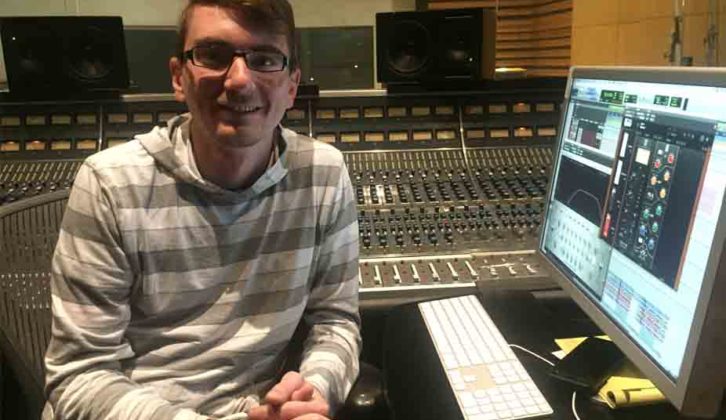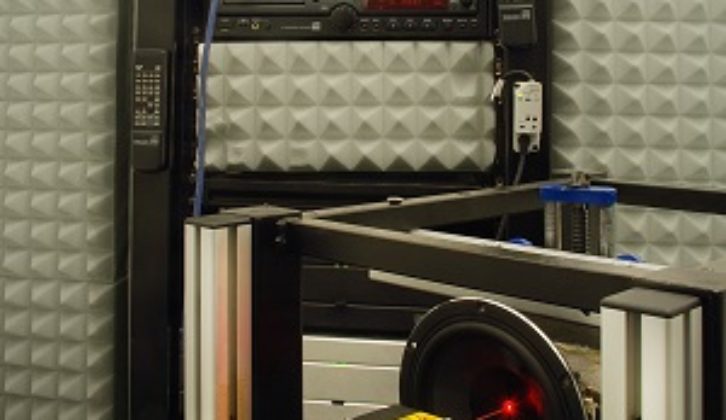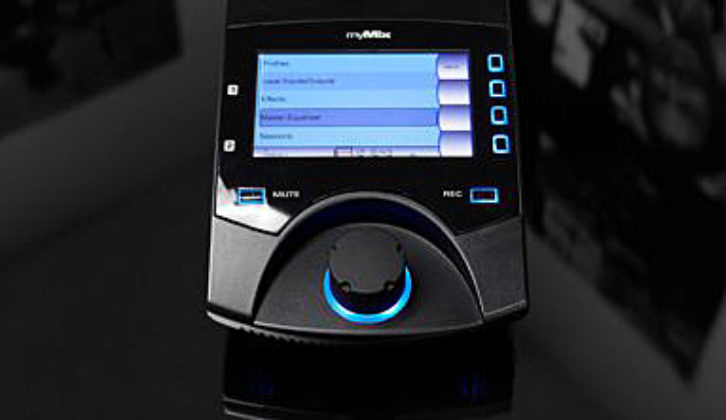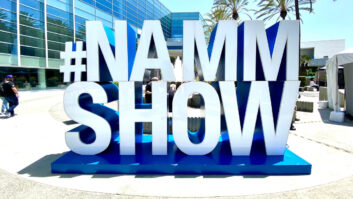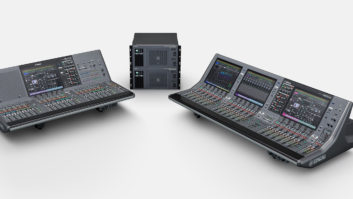New York, NY (November 27, 2018)—Thomas Rhett took it easy this year, only headlining dozens of packed arenas across the country and appearing as the direct support for Kenny Chesney on 18 stadium shows. “We’re probably going to be just over 50 shows,” said Wesley Crowe, Rhett’s monitor engineer since 2014. “It’s been a light year for us.”
That’s not a joke, believe it or not. Crowe would know, having had a stage-side view of Rhett’s career the last few years as it took off in part due to a strenuous touring schedule. When Crowe joined the artist’s team, “it was two buses and a truck back then; now we’re at six buses and eight or nine trucks on this fall tour, with a crew of 40 or so. I’ve seen it grow a lot in the years I’ve been out here.”
Reflecting that growth, the fall leg on Rhett’s Life Changes tour saw engineer Trey Smith join the crew, taking over the FOH spot from production manager Kevin Twist, who previously juggled both titles. The change at the house mix position also meant a switch of the house desk to a DiGiCo SD5, the same model overseen by Crowe in monitorworld. The swap allowed the production to carry an Optocore network that interfaced between mix positions and the stage inputs, doing away with the need for a split and separate stage racks, instead allowing FOH to use the gain structure set in monitorworld as its base.
Joining a production mid-tour is never easy, but Smith had done it before for OneRepublic and found the Rhett camp welcoming. “It’s gone very smoothly and everyone’s helped make it happen and be successful,” said Smith. “We worked with prerecorded shows in a mix-room scenario with nearfields and the FOH package before the tour, so I was able to start dialing up mixes and get a head start.”

A week’s worth of rehearsals with Rhett, musical director David Cook and the band shaped the mixes further: “Thomas would come out and tell me about what he wanted and what his vision was, so it was a cool team effort, and people were and are excited to make it the best we can. I’m all for that—what’s better than to have the artist explain how they want the show to sound and feel? Every artist and camp is different, and your job is to please the artist, so if they can be real with you and tell you what they’re looking for, it makes your job a lot easier, honestly.”
Rhett’s music has been known to bring elements from EDM and other genres into the country realm, so Smith likewise drew on his varied background, having mixed everything from Little Big Town to pop artists like Sara Bareilles to traditional Irish act The Chieftains. “Thomas’ music, especially his newer stuff, is definitely more ‘pop country’ if you will; it has that kind of feel and is a lot of fun to mix and try some tricks at FOH,” said Smith.

One of those tricks, it turned out, was to “get that analog sound and treatment, but still have the flexibility and recall of the digital realm,” he explained. “I have a series of different compressors for some of the inputs, like his vocal, drums and bass guitar. Then, for my summing of the stereo mix going to the PA, I’m sending out different groups into a Rupert Neve Designs 5059 Satellite Summing Mixer, summing together the different elements of the band and vocals, and treating them out of the console with some analog pieces. Then we go into a multiband compressor into an A/D converter and out of that, Dante into the Lake LM44, going into the PA from there. That way, I can have the ‘analog sound’ with a digital console—so it’s the best of both worlds.”
Bringing that mix to the crowds was a d&b audiotechnik GSL line array system from Rhett’s longtime audio provider, Nashville-based Spectrum Sound. While Smith had mixed on a GSL system once before, the tour provided an opportunity to learn the box’s characteristics and discover how it integrated with d&b’s Array Processing software. “Array Processing is a tool that will calculate the room you’re in and make the PA do some amazing things,” he explained. “You can avoid different areas of the room or walls that you don’t want covered; you can change the tone in how the boxes are voiced by adjusting the temperature and humidity, and lots more. What I’ve really enjoyed with the GSL is having a PA that was specifically designed to work with Array Processing—I’ve seen the finesse that you can have with it and the ability to have the PA do exactly what you want, no matter what room you’re in.”
Smith also noted the PA’s rear rejection (“incredible”) and SL-Subs, which he characterized as having the tonal qualities of both d&b’s J-Infra Sub and J-Sub. “With this show, we have a lot of low 808-type hits and different effects that we do where we are going down into 30 Hz, so the ability to have a box that can reproduce something like that has been awesome,” he said. “That brings up another point: Typically, I fly subs in the air to go along with the PA, and here we don’t need to because the GSL boxes go down so low. We’ve been able to have one signal source for all of the content coming from the air and it’s really tightened up the mix.”
Both engineers mentioned the system’s rear rejection, which ironically changed things for Crowe in monitorworld. “The GSL PA makes for a quiet stage, which at the same time can be a double-edged sword because the main thing I fight from day-to-day is the rooms sounding different,” said Crowe. “Even though we’re on in-ears, we’re still in a space that has character. It changes the feel, so having a quieter stage can almost accentuate that, make it a bigger deal. Not that it’s a problem–I think it’s a better to have a quiet stage!”
Each show found Crowe looking after mixes for Rhett and the five-piece band, as well as for six techs, numerous guest mixes and his own cue, with everyone on the same arrangement of JH Audio Roxanne ear pieces and Shure PSM 1000 wireless systems. “They’re pretty much the best thing I’ve found out there, just the audio quality and the stability of RF,” he said.
Also helping keep the stage quiet was a lack of guitar amplifiers, as Crowe pointed out: “All of our guitars and bass are direct out—guitars are Kempers and the bass is a Line 6 Helix pedal board, so we don’t have a lot of mics.” Smith chimed in, “That means literally every song, we can change the tone with those devices—you can choose an amplifier and a combination of pedals on a song, and then MIDI fires off changes to their pedal boards for each one. We spent so much time getting their tone right…to where it fits well within the whole mix that’s coming out of the speakers.” There were a few mics on stage, of course, from the sE Electronics V7 MC1 capsule on a wireless transmitter for Rhett’s vocals, to the selection of Shure, Sennheiser and Audio-Technica mics on the drums, but everything else went direct.
If 2018 was busy for Rhett and his retinue, next year will find them still on the move. Spring tours through Australia and Canada are lined up, and some U.S. dates have already started to get announced as well, all of which means the country star and his audio team will be busy for some time to come.
Spectrum Sound • www.spectrumsound.net
d&b audiotechnik • www.dbaudio.com
DiGiCo • www.digico.biz
